We have one of the greatest numbers of different types of seabirds within a small area than anywhere along the New Zealand Coastline.
The list of seabirds below has been sighted off the Kaikoura Coast, mainly in an area from Kaikoura Peninsula south to a distance of 17 miles off the Conway River mouth.
One of the reasons for such a large number of different types of seabirds in Kaikoura is the presence of the deepwater Kaikoura Canyon which approaches within a kilometre of the shoreline in Goose Bay, south of the Kaikoura Peninsula. Upwellings of cold nutrient rich water over the shallower coastal waters produce and sustain a vibrant food chain supporting a large variety of fish species, marine mammals and seabirds. Click on the links below for more information on each bird species.
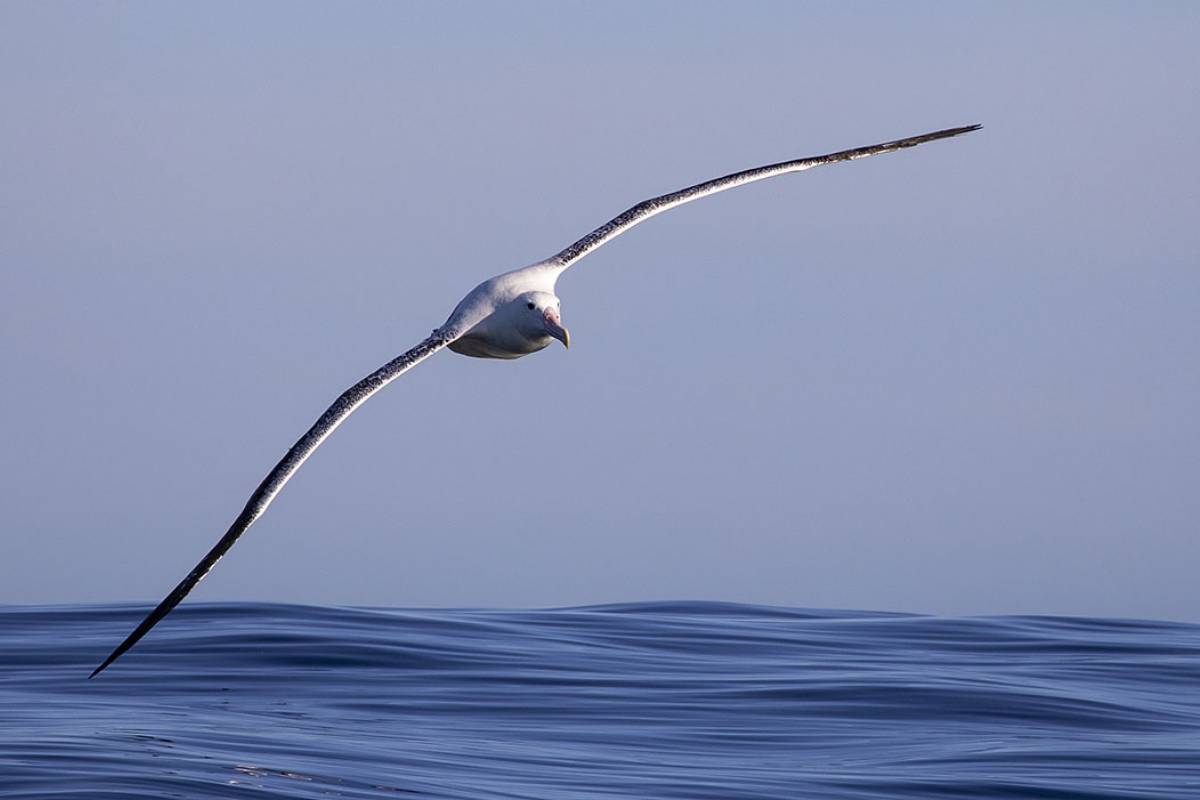
Great Albatross
Great albatrosses are the largest of the albatrosses and are amongst the largest of flying birds. The wandering albatross and the southern royal albatross have the largest wingspans of any bird, being up to 3.5 m (11 ft) from tip to tip, although the average is a little over 3.6 m (12 ft). Large adult males of these two species may exceed 11 kg (24 lb) in weight, as heavy as a large swan.
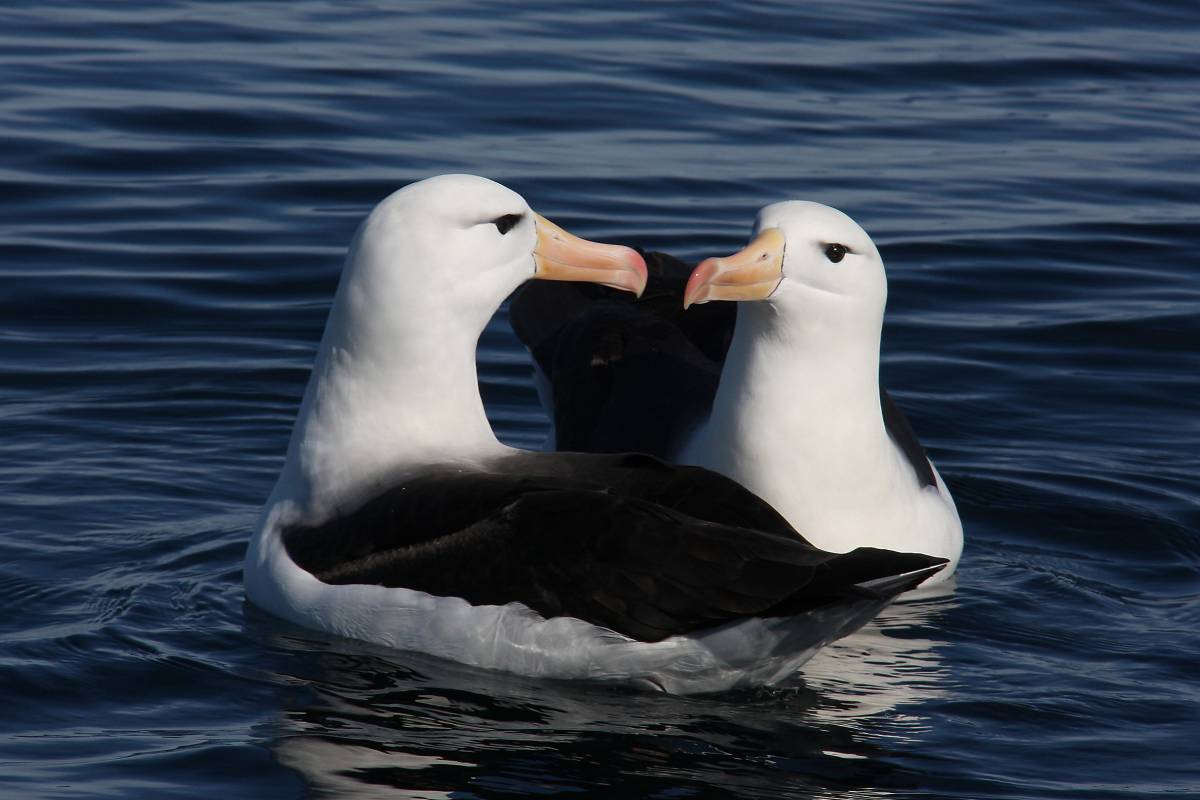
Lesser Albatross
Lesser Albatross (commonly referred to as mollymawks) have the largest range in size of all the albatross genera, with wingspans between 180 and 256 cm (71–101 in).
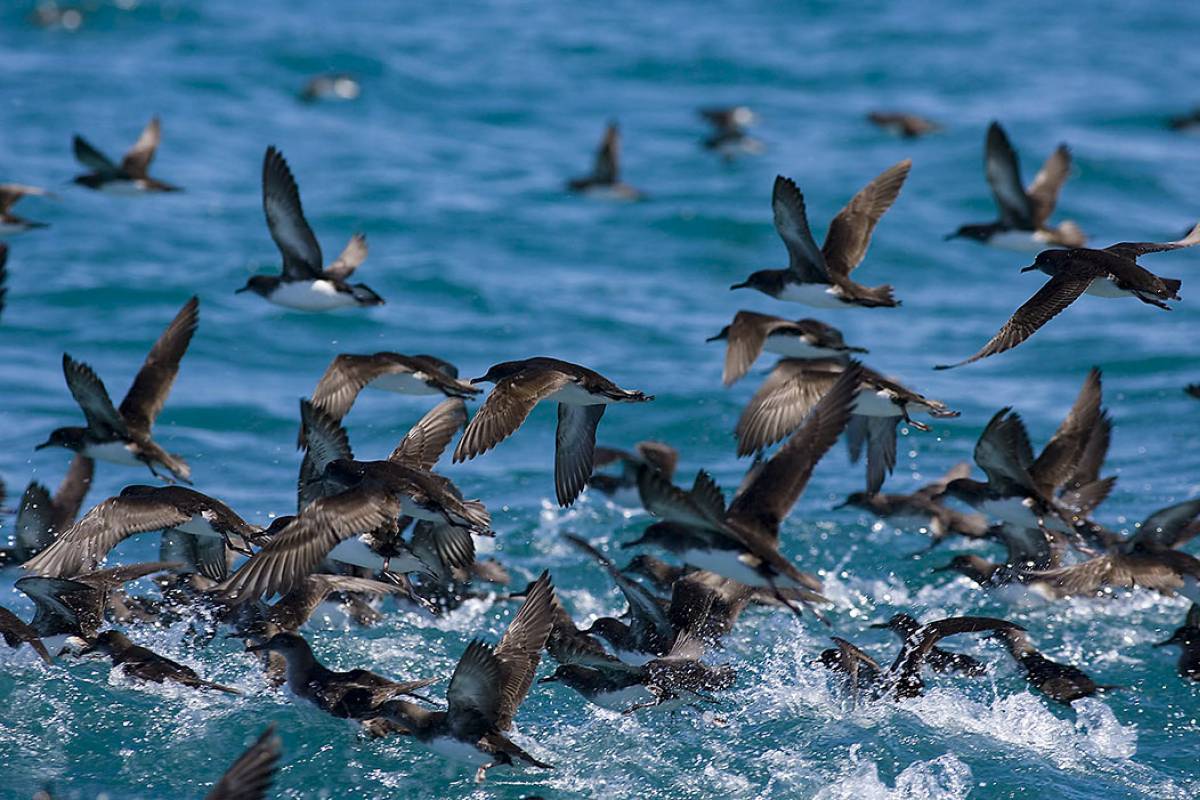
Shearwaters
There are a number of shearwaters able to be viewed off the Kaikoura Coast, and the most iconic is the Hutton's shearwater that only breeds high up in the Seaward Kaikoura Mountain range.
These tubenose birds fly with stiff wings and use a "shearing" flight technique (flying very close to the water and seemingly cutting or "shearing" the tips of waves) to move across wave fronts with the minimum of active flight. This technique gives the group its English name.
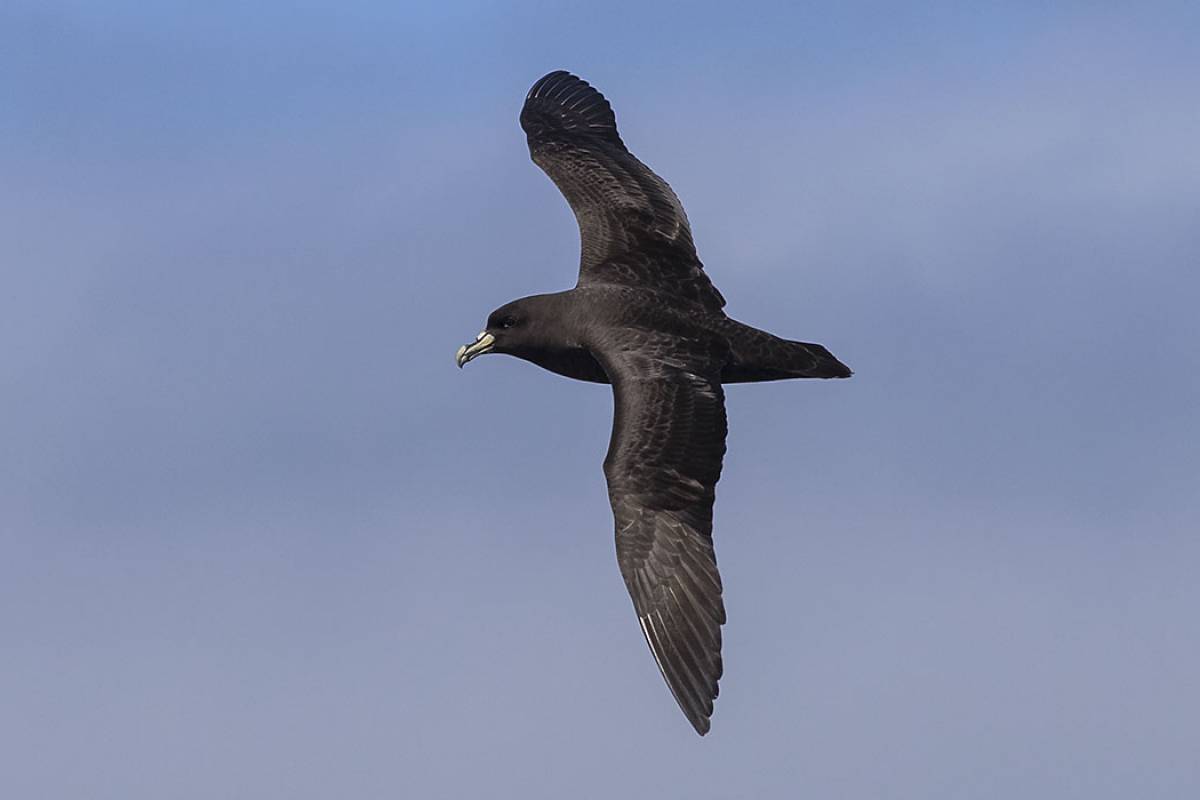
Petrels
The word petrel comes from the Latin name for the Christian Saint Peter, and refers to the habits of certain species to hover just above the ocean waves, with their feet barely touching the water, thus giving an appearance of walking on water, as St. Peter is said to have done. All members of the petrel order are exclusively pelagic in distribution, returning to land only to breed. They are medium-sized birds, characterized by united nostrils with medium septum and a long outer functional primary. The petrel is dominant in the southern oceans, but not in the northern hemisphere. In Kaikoura we can have up to 14 varieties of petrel.
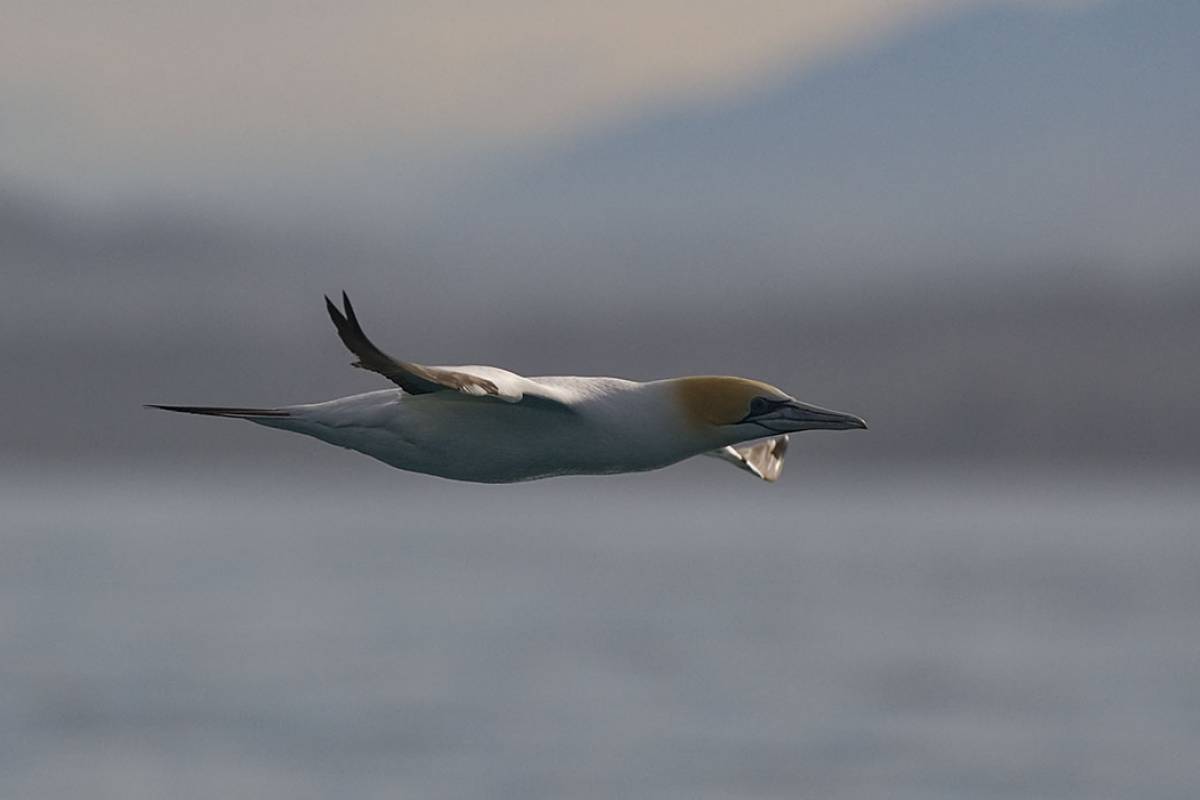
Other Seabirds
The Kaikoura Coast is blessed with a variety of pelagic and shoreline seabirds, offering a good variety for those either wishing to go to sea to view, or by simply walking around the picturesque rugged shoreline.
Within just a small area, in Kaikoura you'll meet one of the greatest varieties of seabirds you'd find anywhere in the world. Several varieties of seabirds, additional to those above, can be found in the Kaikoura area.
Recent Bird Sightings
Kaikoura is one of New Zealand's top birding destinations. The wonderful array of seabirds just offshore are the jewel in the crown with five varieties of Great Albatross, smaller Lesser Albatross, Shearwaters, Petrel and several other seabird species such as Shags, Prions, Penguins, Gulls and Terns.
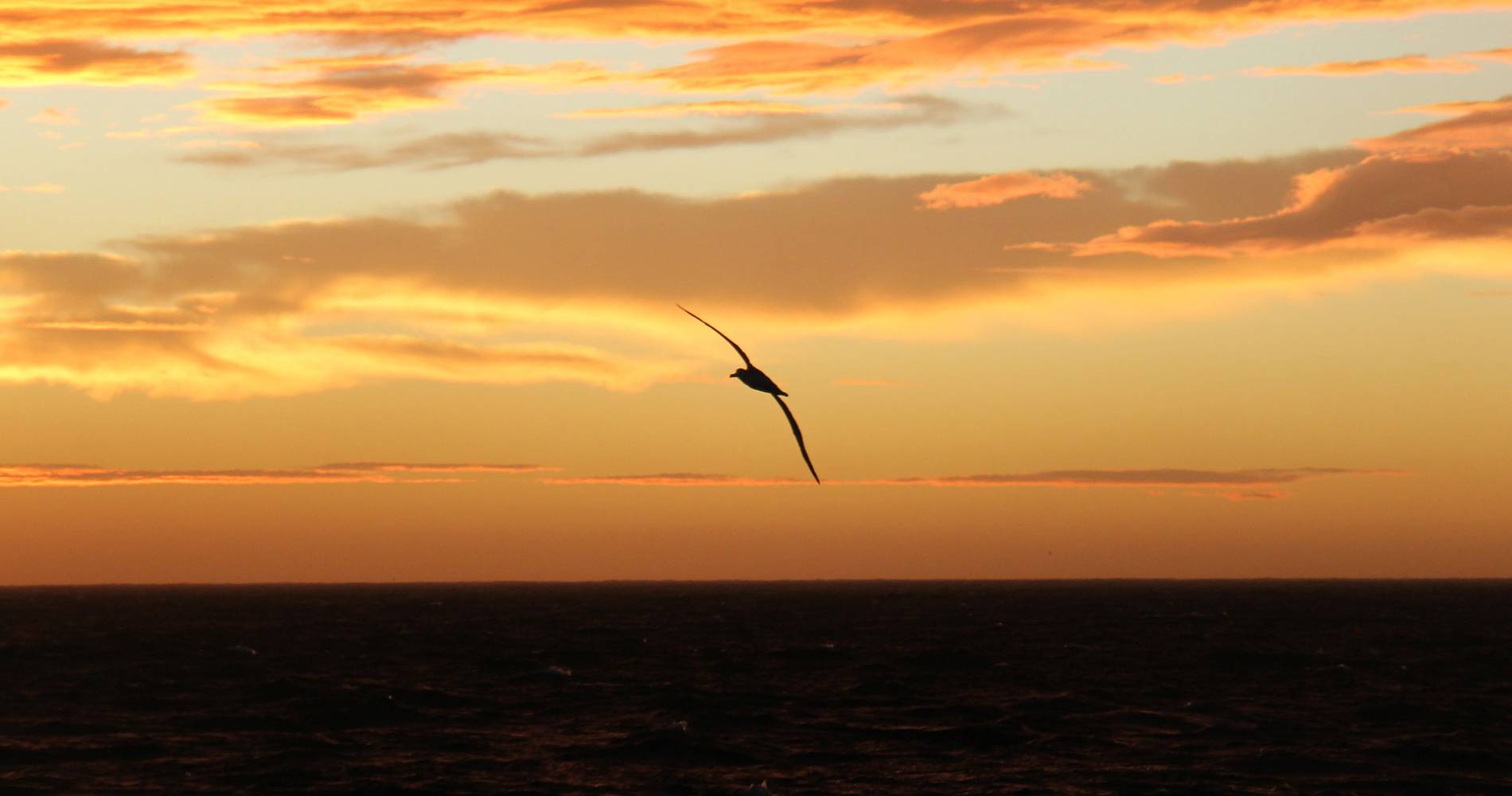
We are privileged to have the abundance of marine life here in Kaikoura and we don’t take this for granted. In 2009 we established the Encounter Foundation specifically to support organizations and groups that are actively working on projects that result in improving the health of the natural environment through conservation, education and research.
We donate a portion of each customer fare to the Encounter Foundation to support worthy projects which make an impact on ensuring our environment is preserved and treasured for future generations.
Thank you for enabling us to do this – your support of our business is making a difference in a very positive way.